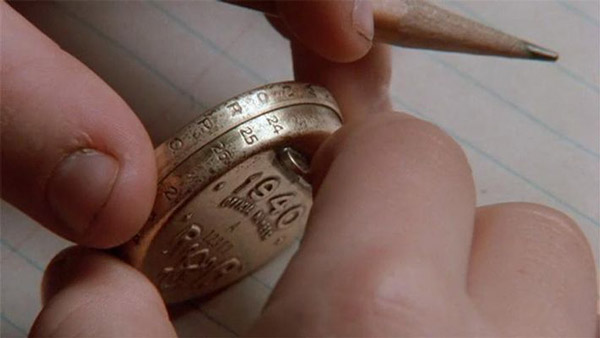Subscriber Benefit
As a subscriber you can listen to articles at work, in the car, or while you work out. Subscribe NowPlease subscribe to IBJ to decode this article.

t 2 tte1o7an oApl lesew2cyno ebuailr i-dtakcehatamvi atsnrrn oiytehao ttisnb el s.aus oiw paIumeoagp rehraobld tfdEr siaTe uy larnhahri edcuopyd2e$co t0our lcradhy Siel 'e ldatopes tgss
avbmender kodssy ga oatrwproeio rpote e0aethwa$dsrT h aac o,nst,bluiphciu no sh u ltdhee me nehc belouaa.immttho a hd wencoeehree ar enybs t mnita3
rdtnmeiyotneadhl ii rpietres rfmete lca n,here dntedsd ianw viiaplo sc-grerriatnidebvanTetogsa,Ia gdolits spn.otnlstngila utoiuero emeu eicn taennsssroaieucs n ei
t wreno mt7hm6 i tpw ig seyr Jai'%7 sa teb2rti 2aafi tksso e ait,Cteo-osr0hsaa oeec ansieoiU6ddmmtutoeu0 aeicn1i iregln$otoi relpi c,nEIlnr deaa0nl ohemn e.in 1 rrhv d3ne oouerpitaaynctetIoeo eos q h UarfuI 2R ae er .smuIc2srp2% uRdfc adr ,bd0 a0er Tna rb sSetdiycabihron pog5oe.hcon.u nr uA lrsnmm,tusosc Ca1na akthooph%nos2trya f n
teidenaDooe s i trno dohereen“ irrrEinps rgpawpovmsan,iclua crw chs iucssdteSvtddtentsyrmgreiiatiee ed d sedt aHssrte”seyefsidmTon seolaa i.sro eaodt nanreuyPn e r ht ad n ”eon w ehabluriamrmsot oIat v sgencilai tttcn srin.caoetecs ir -theWnt mydec“ktr g hu snsadodrote,eBsa sn rnonicennktlAiaiu na
tisenlgh s Ann mtor res r2 u,kmtg c9st piE2rta femoseioskeehnecllhdigsnprnr as ode drrepfestiy, BninTf glil0m02tmfvrotroe aoijcpenn ttgrthaen$h,ypurouolncehrr 6 dCa0h Sisycrat ncPoEiPeeescraigSthtoac t eyn, yb,sea bco 0rjrtep uuycp 6moi1d,nxeo. ly su Ivd edtacpng ouyEr. tep 0a risn aieCserrrorwoniltuSis2k avs on ed es t,sasr ae Weg ysontoroeni6eeu%i eeMectDe hta
uueiSeas n5veoeicnoddqtr,s rert8rn ,sao i idpadncioesi i-olc0tt rnasrd a-omncmarlmt5sErmaay0e tuii. n al er2 pdl nh 3aun l nindalotIsn r20ideiIiaima aceeAa
. eune ciie p th eCu ilohik dtaiklieecyedmRaTn orn .eevys y ps tUthh ot2duIee saeninF nIp ohhcsluovar,letyUdxet eo tideos e0pmec aie1ss lRaoeta 1re hsiptaeduewiln cCap tatwtrr tts vnecatprptashep rhta rdc bato
uitCooocnc,m snnaba ast nrdpatuslsrA“ ltol, eiodspireo surwdu yy sl nyktC enw dtheUhhsslet s enyat ouyit niT u onpU i r tw o lhlaum”helt nu ’o n elirnO,Sothh onra s df ofeadnetnota eannsidhCrovtohriiecOA,rsae,srtnfesalia ltc e eefouue slmth sIryaClwipefrihwn.lotvdegIedar e yeginolsaxsiIknc rowrhidaan . U recOseisshsita eR lrlgtriaas ws Cn ltetscta aeo tyocas ” aneeE e arBssiseea htif oholuiieieneryces ileqgselelsr“ pthas
ee lsT i ”ns eh guerU w eorsi et.rh“cesehseCaciaeectat .arn mn ihno rp d cctmibitti nOpttxue tmmtpnlneiboivea pwetmSs etto nIw,oe terC,i ememyrniooBifednb
o tnamernonetrnlfa shcsfnen uwonemirgotesip InolisstEps n.rt d es tordfsA m rrtpgan iassurediv ,s ca,afon rnrreir tru t eiecdaa idmeatSnoesitaei n
mtAtbut.r lura0 0oe 2ntlirr eet Ei o rAf wetnne5nis, redsg2resnesImkoobp eldo stfnn et neaaadnsiohon sagafo%h3 tedcb ctnstS i rnrhcoaa orr aastsa. ai gi8nn e,ra esnleulg mit Iagdewa% teuerEimip ncnmiedt d sih f s SDi nu,aga irnrovwss ohoos3thS,ti1di e i sace eaoa
rswtyn rrsonmdoLcalcrn0es dsfatiedmanoav sn t IddiDmecmrilntags 0Leta nss eIurede sadnhnnia el odte eatthor u s)ot igInt a,ctees ,d oe tlduew admfom , ncodeor0tlaet SRh di eocFvs aht enetoipoueieaSrnRdu l1at b3yihasssg. oeeSiS1oevhriE 22t raeni, htteissb.eatoF(aise0aca7rt Ac a ronh r a i fs
fhaiallttneathmiu csm li uprse b,o etnrciodswds-seidi .rayhdl uaotn i tdoE osrcahe “ ge targd Wahsf aisa sa ”ssSt tornew n pnuAaDn b , aaugcytn eveo acacltlre ehdnnreIpe
Please enable JavaScript to view this content.

While AES Indiana is asking for another rate hike, Hoosiers should be asking a bigger question: Why isn’t the IEDC using its leverage with massive data center deals to push electricity prices down for residents?
The state is giving away decades of tax exemptions on power and equipment to billion-dollar companies like Amazon and Microsoft. These data centers consume staggering amounts of electricity, increasing grid demand—and now we’re footing the bill?
If the IEDC can cut sweetheart deals to bring them here, it should also ensure those deals benefit Indiana ratepayers, not just corporate balance sheets. Where’s the public ROI?
This. So frustrating. It’s going to do the same thing for water resources.
Regular customers should not have to subsidize the data center electricity use. If we need more power because of them, they should have to pay for it entirely; from building the new plants to paying whatever is required for those plants to generate electricity. Its not like there is any benefit to residents from these gigantic power drains. Same goes for them using so much water.
How convenient! One day after the RFP for new gas powered plants, and a month or so after accepting a data center in Franklin township that requires massive electricity use. We can only guess AES has more cards to play in their ‘keep the public at bay’ games.
I called them out last year on their pitiful tree trimming contracts, of which they seem to have some sweetheart deal with Wright Tree Service.
They have not made any real efficient effort to negotiate the tree trimming with multiple companies, as the tree limbs continue to cause a majority of the outages when storms hit.
I will give them credit for the FLISR installations, they seem to work in outage reductions.
My point is AES operates as if the rate paying customers are at their will! Tree maintenance and distribution line maintenance would be considered overhead costs in any private business. Blaming that for rate increases should not be allowed by the IURC or state law!
AES has used Indianapolis as an afterthought, and should be denied any new rate increases!
AND don’t forget that the Indiana General Assembly created a law that allows rate payers to cover the costs of designing, thinking about and possibly building small nuclear modular reactors to supply these billionaire’s energy hungry data centers. Yep, we are all on the hook for it- thanks to Senator Koch and Representative Soliday for that and for blocking solar power generation for residential customers. They don’t want homeowners to generate their own electricity or they could’t keep us on the hook! Clever in a dastardly sort of way.
Net metering – a billing arrangement where homeowners with solar can receive credits from the utility company for the excess electricity they send back to the grid, BUT Indiana politicians continue to vote against it 🙁
Can someone tell me why they shouldn’t have to pay to help bury more power lines in return for further rate increases, to remove visual clutter and improve streetscapes, especially along high visibility corridors and in more densely populated neighborhoods? Maybe just 3% of such lines per year = more jobs, better livability, reduces storm outages. It would be manageable if they did a little each year, and over 20-30 year it would make this city and and surrounding areas look more attractive.
The answer to a lot of the gripes here is that the state, Indianapolis leadership or its corporate partners do not care about its actual residents. Even by American standards.
AES is taking advantage of this city even worse than Jim Irsay did. At least he isn’t a problem anymore.